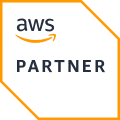Innovation isn’t just about developing cutting-edge solutions – it’s also about how providers communicate their value to the market. In an industry of legacy systems challenged to remain relevant in the face of ever-evolving, transformative technology, it’s common to find incumbent providers adopting the same forward-thinking product positioning as new and emerging providers—a strategic move aimed at reshaping perceptions, retaining existing customers, and staying relevant in an ever-evolving industry.
Of particular popularity are varying claims of “cloud tech.” But as we’ve previously explained -especially in the context of core accounting engines – there is a significant difference in the advantages of cloud-native frameworks vs. cloud-enabled legacy applications.
Cloud-native frameworks enable unparalleled agility, automation, code quality and time-to-market, thanks to their real-time processing, entry to endpoint (e.g., NAV) designs, microservices architecture, and automated CI/CD pipelines.
On the other hand, traditional frameworks, while reliable, and often placed “in the cloud,” tend to be far less agile, require much more manual intervention, and have significantly slower deployment cycles, making them less suitable for organizations seeking scalability and rapid time-to-market.
So how can firms cut through the buzz to find objectivity from such subjective statements? That’s not easy – but there are some key differences in technology frameworks that help contrast the truly new and innovative investment accounting solutions vs. cloud-enabled capabilities that have been stacked onto a legacy accounting engine.
FundGuard’s Peter Muldoon is back to further decode some of the major framework differences that get to the crux of what differentiates new versus legacy solutions and why that distinction matters to your business. Take a look below.
Cloud-Native Frameworks | Traditional Cloud-Enabled Frameworks |
Infrastructure for Provisioning | |
Native cloud applications use Infrastructure as Code (IaC). IaC enables automation of infrastructure provisioning, eliminating the need for manual processes. This automation allows developers and operations teams to spin up entire environments quickly, often within minutes, reducing the time required to set up infrastructure.
IaC integrates well with CI/CD pipelines, allowing automated deployment of infrastructure alongside application code. This seamless integration accelerates the deployment process, reducing time to market for new features or updates. | Legacy ‘cloud-enabled’ applications often rely on manual processes for infrastructure setup and scaling. This manual approach is time-consuming, error-prone, and can lead to deployment delays.
These older applications are also typically limited in the automation tools that can be used for testing, deployment, and scaling. This reliance on manual tasks slows down the development cycle, affecting time to market.
And most not least, monolithic applications are often tied to physical hardware or specific database configurations, making it very difficult to quickly and cost-effectively scale or adapt to changing demands. |
Testing for Code Quality | |
The microservices architecture is very agile and allows developers to isolate codebases, and to conduct independent testing, debugging, and deployment. This isolation helps maintain high code quality even as the application scales.
Continuous Integration/Continuous Deployment (CI/CD) pipelines automate code testing and deployment, allowing for rapid iteration and frequent releases. This facilitates ongoing code quality checks and reduces human errors. Task Automation: Cloud-native frameworks are designed to automate tasks such as testing, deployment, and provisioning. Tools like Kubernetes for orchestration, AWS CDK, CloudFormation and Bicep for CI/CD, and configuration management are commonly used. This automation greatly reduces manual effort and significantly increases scalability. | High levels of code quality require much more management, lack agility and are more challenging due to tightly coupled components. This can lead to difficulties in isolating issues and maintaining consistent code quality. Automated testing tools available to traditional frameworks are rigid to work with and routinely break as new code is compiled. The very limited levels of automated testing that are possible, and the complexity of deployment, increases the risk of human errors, which can affect code quality and stability. Traditional “waterfall” frameworks may have some level of task automation, but as mentioned, they require more much manual interventions for testing, deployment, and provisioning. Also, the dependency on physical hardware can limit scalability and agility. |
The actual tech tools used for provisioning, deployment and testing of the core accounting database engine are not subjective. One way to reconcile the subjective statements that sound factually objective is to ask your providers to confirm that their tech stacks for core accounting calculations (not results data) include the following capabilities. If the answer is NO to any one of these modern tech capabilities, then it’s possible you’re being cloudwashed.
DevOps, Deployment, and Infrastructure
Core Accounting Database
Monitoring, Logging, and Observability of the Core Database
So, can FundGuard tick all of these boxes? YES. And if you’re wondering how all of this translates to business and operational benefits, we would love to show you. Please get in touch for a product demo, deep dive into our tech stack, and to discuss the business benefits of a fully cloud-native investment accounting platform.
💡By starting with the accounting engine, firms can address critical operational inefficiencies, ensure data integrity, and lay the groundwork for further technological advancements, ultimately leading to a more agile and competitive organization. Get in touch with the FundGuard team to learn more.
About the Author
100 Bishopsgate
18th Floor
London, EC2N 4AG, United Kingdom
Sign up for FundGuard Insights



Your use of information on this site is subject to the terms of our Legal Notice.
Please read our Privacy Policy.